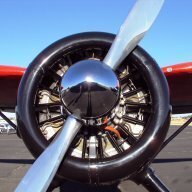Thx Harthy,
I would agree with you in the main but there are some consumable parts I feel ok about not buying from the OEM ... to name a few: spark plugs, HT leads, oil and air filters, lubricants, most o-rings, batteries, rotor buttons and distributor caps.
Would I buy a set of conrods or other major engine components from an after market supplier, I think not!
Its not always the money either, it's more about the access to parts when you need them and not having to run my own store of bits or wait a week to get them.
Cheers
Jack


